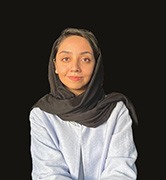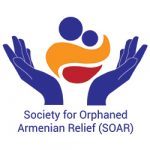SOAR - Tehran Chapter
Tehran became part of the SOAR family in May 2015. The Iranian-Armenians were very influential and active in the modernization of Iran during the 19th and 20th centuries. Today, the Armenians are Iran’s largest Christian religious minority. Despite their cultural Armenian identity in Iran, no sizeable numbers of Iranian-Armenians hold Armenian citizenship. It is commonly noted that, due to their migration to the Persian Empire many centuries ago, Armenians of Iran have culturally assimilated with their Persian compatriots and adopted a number of their traditions while simultaneously keeping their distinct Christian and Armenian faith/traditions.
The cultural links between the Armenians and the Persians can be traced back to Zoroastrian times. Prior to the 3rd century AD, no other neighbor had as much influence on Armenian life and culture as Parthia. They shared many religious and cultural characteristics, and intermarriage among Parthian and Armenian nobility was common. For twelve more centuries, Armenia was under the direct or indirect rule of the Persians. While much influenced by Persian culture and religion, Armenia also retained its unique characteristics as a nation. Later, Armenian Christianity retained some Zoroastrian vocabulary and ritual.
In 1914, there were 230,000 Armenians in Iran. During the Armenian Genocide, about 50,000 Armenians fled the Ottoman Empire and took refuge in Persia. Further immigrants and refugees from the Soviet Union numbering nearly 30,000 continued to increase the Armenian community until 1933. Armenian churches, schools, cultural centers, sports clubs and associations flourished and Armenians had their own senator and members of parliament, while 300 churches and 500 schools and libraries served the needs of the community. Armenian presses published numerous books, journals, periodicals, and newspapers, the prominent one being the daily “Alik.” By 1979, the number of Armenians reached 500,000, but, after the Iranian Revolution, the number of Armenians decreased to about 250,000.
The Armenians remain the most powerful religious minority in Iran. They are appointed five seats in the Iranian Parliament, and today in Iran there are about 120,000-150,000 Armenians left, half of which live in the Tehran area.
BOARD OF DIRECTORS:

Shadi Avani
President
Shadi was born and raised in Tehran, Iran. She received her bachelor’s degree in law from the University of Tehran. During this time, she pursued her passion of helping autistic children in both autistic organizations and orphanages. She also tutored high school students who were in need. She became fluent in English and continued to study Arabic and French. She has been working on legal philosophy and human rights since she began her master’s degree in philosophy in 2020. She hopes that one day she will be able to protect individual rights by establishing effective national and international rules, particularly for children.

